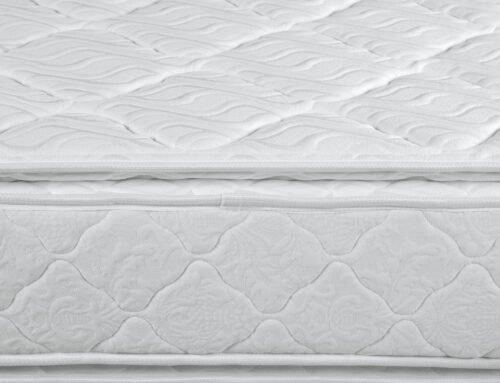[ig_row][ig_column span=”span12″ css_suffix=”col-sm-12″][ig_text enable_dropcap=”no” disabled_el=”no” ]Whether heaped with pillows or minimally spare, keep beds, mattresses and bedding in top shape with these easy-care tips.A good night’s sleep starts with a good bed. How does yours stack up? Since we spend one-third of our lives in them, beds and mattresses deserve proper care. They’ll repay us with a clean, healthy place to sleep.
Frame it right
Just as our bodies need the support of a good mattress, so mattresses need a proper place to rest. Purchase mattress and box springs as a set to make sure that the two pieces will work together harmoniously. Check the bed frame; larger mattress sizes — queen- or king-sized beds — require centre support or full-width slats to span the wider width.
Take a seasonal spin
Unless the manufacturer advises otherwise, rotate mattresses from heel to toe when the seasons change. To rotate, revolve the end of the mattress nearest the headboard toward the foot of the bed, then nudge the mattress back into place on the box springs. Rotating mattresses helps prevent the formation of sleeping “wallows,” caused by the same body in the same spot every night.
Flip it
Some mattresses should also be flipped when the seasons change. While pillow-top mattresses should not be flipped, other mattresses wear more evenly when the bottom surface nearest the box spring is flipped over to the top of the bed during a seasonal rotation. Check with your manufacturer for specific recommendations for your model.
Ban bouncing
Kids enjoy bouncing on the bed, but the poor mattresses loathe the practice. Discourage these child gymnasts. Jumping on beds can damage mattresses and box springs, and fracture bed frames.
Use protection
Sweet dreams are the goal, but accidents happen. Protect mattresses from messy mishaps with mattress pads. They’ll absorb moisture and spills before they soak through to the mattress.
Suck it up
Regular vacuuming will keep mattresses clean and fresh. Remove all bedding from the mattress, then use the upholstery brush to vacuum the top surface and sides of the mattress. Vacuuming removes dust, skin flakes and the dust mites that feed upon body waste. Vacuum mattresses thoroughly when rotating them seasonally.
Clean stains safely
If a stain does occur, use an upholstery shampoo as directed to remove it. An alternative cleaner, recommended by manufacturers for use on mattresses, is called “dry suds.” Create them by placing about 1/4 cup of liquid dishwashing detergent in a small mixer bowl. Turn the mixer on, and add a few teaspoons of water, a teaspoon at a time. Stand back! The bowl will quickly fill with foam. Scrape the top layer of foam into a small bowl, and take it to the mattress. Rub the stained area gently with the foam, using a sponge or a soft brush, being sure not to wet the padding beneath. Leave the mattress exposed until it is thoroughly dry before replacing the bedding.
Controlling Allergens in the Bedroom
Carpet, window treatments and mattresses collect dust and dander and provide a happy playground for dust mites. Found anywhere there are humans, humidity and higher temperatures, dust mites are a major cause of allergic symptoms in the home. More correctly, it’s their dead body parts that cause allergic reactions — and their food source is us! Dust mites feed on discarded skin flakes, making bedding and bedrooms prime dust-mite real estate.
Replace down products
Pillows, comforters and other items should be made from synthetic fibres. Encase pillows in vinyl covers for added protection. Regular cleaning is the best defence against allergens and dust mites.
Send Duff to other quarters
Bed down household pets in an area outside the bedroom if allergies are a problem. Pet dander is an allergen for many, and pets shed fur and skin cells, too, promoting dust mite populations. Banish Duff from the bedroom at night, and make it up to him with extra walkies in the morning — after a good night’s sleep.
Keep humidity levels low
Dust mites die back when there’s insufficient moisture in the air. In humid climates, use a portable or whole-house dehumidifier to reduce in-house humidity levels to between 30 percent and 50 percent. Mites thrive in warm weather, so keep household temperatures lower in the bedroom.
Fight back with spring cleaning
Because mites grow best in warm, humid weather, take advantage of early spring to clean the house. Vacuuming and dusting will remove the mites who’ve wintered over before they can run riot in spring.
Wash bedding often, in hot water
Temperatures of 130 degrees F are required to kill mites; mites can survive cold water washing. Wash sheets and pillowcases weekly, and give pillows, comforters and blankets a trip to the washer every month to six weeks.[/ig_text][/ig_column][/ig_row]





